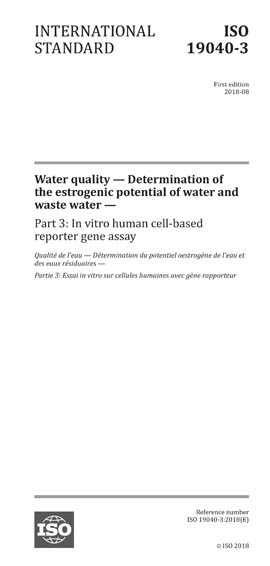Most recent
ISO 19040-3:2018
Water quality - Determination of the estrogenic potential of water and waste water - Part 3: In vitro human cell-based reporter gene assay
This document specifies a method for the determination of the estrogenic potential of water and waste water by means of a reporter gene assay utilizing stably transfected human cells. This reporter gene assay is based on the activation of the human estrogen receptor alpha.
This method is applicable to:
— fresh water;
— waste water;
— aqueous extracts and leachates;
— eluates of sediments (fresh water);
— pore water;
— aqueous solutions of single substances or of chemical mixtures;
— drinking water;
— the limit of quantification (LOQ) of this method for the direct analysis of water samples is between 0,3 ng/l and 1 ng/l 17β-estradiol equivalents (EEQ) based on the results of the international interlaboratory trial (see Annex F). The upper working range was evaluated [based on the results of the international interlaboratory trial (see Table F.3)] up to a level of 75 ng EEQ/l. Samples showing estrogenic potencies above this threshold have to be diluted for a valid quantification. Extraction and pre concentration of water samples can prove necessary if their estrogenic potential is below the given LOQ.
Content Provider
International Organization for Standardization [iso]






